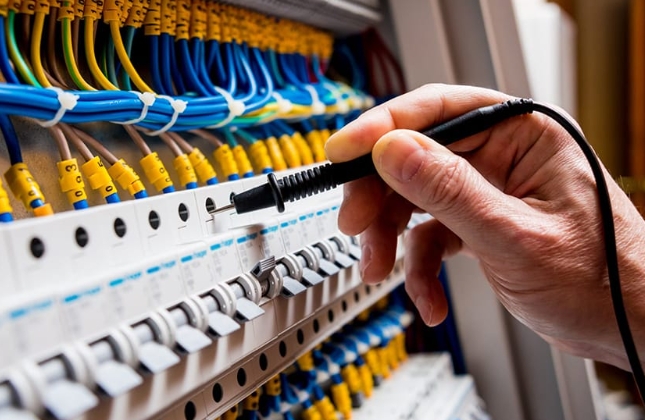When you flip a switch and the circuit breaker trips, it can be both frustrating and perplexing. Understanding the underlying reasons for this common electrical issue is crucial for homeowners and professionals alike. In this article, we will delve into the mechanics of circuit breakers, the various causes of tripping, and practical solutions to prevent future occurrences.
Understanding Circuit Breakers
Circuit breakers are essential safety devices designed to protect electrical circuits from overloads and short circuits. They function by interrupting the flow of electricity when they detect an anomaly, thereby preventing potential hazards such as electrical fires or equipment damage. Each breaker is rated for a specific amperage, and when the current exceeds this limit, the breaker trips, cutting off the power supply.
Common Causes of Breaker Tripping
- Overloaded Circuits
One of the most prevalent reasons for a breaker tripping is an overloaded circuit. This occurs when too many devices are connected to a single circuit, drawing more current than the breaker can handle. For instance, if you have multiple high-wattage appliances plugged into the same outlet, the cumulative load may exceed the breaker's capacity, causing it to trip. Solution: To resolve this issue, redistribute the load across multiple circuits. Consider using dedicated circuits for high-demand appliances, such as refrigerators, air conditioners, or space heaters. - Short Circuits
A short circuit happens when a hot wire comes into contact with a neutral wire or a ground wire. This creates a low-resistance path for the current, leading to a sudden surge that trips the breaker. Short circuits can be caused by damaged wiring, faulty appliances, or loose connections. Solution: Inspect the wiring and connections for any signs of damage or wear. If you suspect a short circuit, it is advisable to consult a licensed electrician to diagnose and repair the issue. - Ground Faults
Ground faults occur when a hot wire touches a ground wire or a grounded surface, causing the current to flow through an unintended path. This is particularly dangerous in wet areas, such as kitchens and bathrooms, where moisture can increase the risk of electrical shock. Solution: Install Ground Fault Circuit Interrupters (GFCIs) in areas prone to moisture. These devices are designed to detect ground faults and trip the circuit before any harm can occur. - Faulty Appliances
Sometimes, the issue may lie with the appliance itself. A malfunctioning appliance can draw excessive current or create a short circuit, leading to breaker tripping. Common culprits include refrigerators, washing machines, and power tools. Solution: Unplug the appliance and reset the breaker. If the breaker remains tripped after resetting, the appliance may need to be repaired or replaced. - Aging Breakers
Circuit breakers can wear out over time due to repeated tripping or internal component degradation. An aging breaker may trip more frequently, even under normal load conditions. Solution: If you suspect that your breaker is old or malfunctioning, consider having it tested or replaced by a qualified electrician.
Preventive Measures
To minimize the chances of your breaker tripping, consider implementing the following preventive measures:
- Regular Inspections: Schedule periodic inspections of your electrical system to identify potential issues before they escalate.
- Load Management: Be mindful of the total load on each circuit. Use energy-efficient appliances and avoid overloading outlets.
- Upgrade Your System: If your home’s electrical system is outdated, consider upgrading to accommodate modern energy demands.
Conclusion
Understanding why a breaker trips when you turn on a switch is essential for maintaining a safe and efficient electrical system. By recognizing the common causes and implementing preventive measures, you can reduce the likelihood of unexpected outages and ensure the longevity of your electrical components. If you encounter persistent issues, do not hesitate to seek professional assistance to safeguard your home and its electrical integrity.

